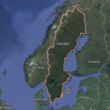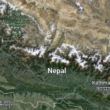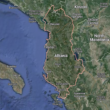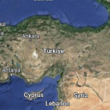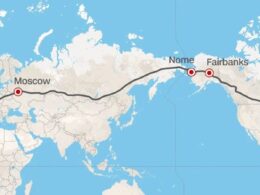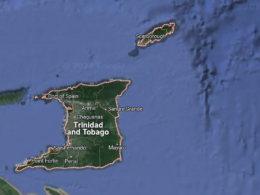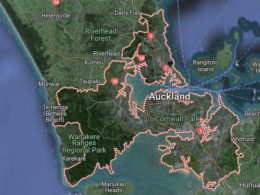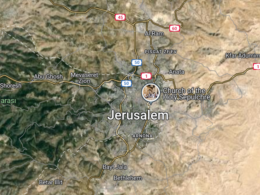Montreal is the largest city in the province of Quebec and the second-largest in Canada.
The city is known for its vibrant arts scene, including numerous festivals like the Montreal International Jazz Festival.
Montreal’s Old Port is a historic area that has been revitalized with shops, restaurants, and entertainment.
The city is renowned for its diverse culinary scene, blending French and Canadian influences.
Montreal’s underground city, Réso, is one of the largest underground complexes in the world.
The Montreal Biodome allows visitors to explore four different ecosystems under one roof.
The city is home to Mount Royal, a large volcanic hill that offers panoramic views of the city.
Montreal has more than 200 parks, making it one of the greenest cities in North America.
The Montreal Museum of Fine Arts is one of the most prestigious art museums in Canada.
Montreal’s Metro system is the second busiest in Canada, after Toronto’s.
The city hosts the world’s largest comedy festival, the Just for Laughs Festival.
Montreal’s McGill University is one of the top universities in Canada and North America.
The city’s Jean-Talon Market is one of the largest public markets in North America.
Montreal’s language is primarily French, with a significant English-speaking population as well.
The Montreal Canadiens are one of the oldest and most successful teams in the NHL.
The city is known for its extensive network of bike paths and cycling-friendly culture.
Montreal’s Plateau Mont-Royal neighborhood is famous for its colorful murals and bohemian vibe.
The city has a rich history of jazz, with many famous musicians originating from or performing here.
Montreal’s Sainte-Catherine Street is one of the longest and busiest shopping streets in Canada.
The city is home to the historic Notre-Dame Basilica, known for its stunning Gothic Revival architecture.
Montreal hosts the annual Montreal World Film Festival, one of the largest film festivals in the world.
The city’s underground city, known as La Ville Souterraine, is a network of pedestrian pathways, shops, and services.
Montreal’s Atwater Market is a popular spot for local produce, cheeses, and meats.
The city has a strong sports culture, with major teams in hockey, baseball, and soccer.
Montreal is famous for its bagels, which are a local delicacy and distinct from New York-style bagels.
The city’s Lachine Canal is a popular spot for kayaking, cycling, and picnicking.
Montreal’s Plateau area is known for its vibrant nightlife and eclectic mix of bars and restaurants.
The city’s Botanical Garden is one of the largest in the world, with extensive collections of plants and flowers.
Montreal’s Mile End neighborhood is famous for its artistic community and historic buildings.
The city is home to the Montreal Science Centre, offering interactive exhibits and IMAX films.
Montreal has a unique blend of European and North American architecture, reflecting its French heritage.
The city’s Olympic Stadium, built for the 1976 Summer Olympics, is an iconic landmark.
Montreal’s Grévin Museum features wax figures of famous celebrities and historical figures.
The city has a strong tradition of theatre and performing arts, with many venues and festivals.
Montreal’s Mount Royal Park is a popular spot for hiking, picnicking, and winter sports.
The city’s Old Montreal area features cobblestone streets and historic buildings dating back to the 17th century.
Montreal is known for its vibrant nightlife, with numerous clubs, bars, and music venues.
The city’s Quartier des Spectacles is a cultural district known for its festivals and events.
Montreal’s Parc Jean-Drapeau is a large urban park with beaches, bike paths, and the Montreal Casino.
The city is famous for its winter festivals, including the Montreal en Lumière and Igloofest.
Montreal’s International Balloon Festival is one of the largest in the world, attracting thousands of visitors.
The city’s Little Italy neighborhood is known for its Italian heritage, cafes, and restaurants.
Montreal’s Pointe-à-Callière Museum is an archaeological museum located on the site of the original city.
The city’s underground pedestrian network, La Ville Souterraine, connects shopping centers, offices, and hotels.
Montreal’s Chinatown is one of the oldest in North America, with a rich cultural heritage.
The city has a number of historic churches, including the impressive St. Joseph’s Oratory.
Montreal is home to the Montreal International Auto Show, one of the largest in Canada.
The city’s historic Lachine Canal was once an important waterway for trade and transportation.
Montreal’s Parc Mont-Royal is a large urban park designed by Frederick Law Olmsted, the designer of Central Park.
The city’s annual Festival de Jazz attracts musicians from around the world, making it one of the largest jazz festivals in the world.
Montreal’s Underground City is a vital part of the city’s winter culture, connecting shopping centers and offices.
The city has a rich tradition of street art, with many murals and graffiti artworks throughout the city.
Montreal’s Vieux-Port (Old Port) is a popular destination for festivals, activities, and scenic views.
The city’s rue Saint-Denis is known for its lively atmosphere, cafes, and cultural venues.
Montreal is a major center for aerospace and biotechnology industries in Canada.
The city’s Place des Arts is a major cultural complex hosting concerts, theater, and dance performances.
Montreal’s Lachine Canal is a popular spot for water activities, including kayaking and paddleboarding.
The city’s local cuisine includes poutine, a dish of fries, cheese curds, and gravy, which is a Canadian classic.
Montreal’s Festival Mode et Design is one of the largest fashion festivals in North America.
The city is known for its extensive network of parks and green spaces, including the Montreal Botanical Garden.
Montreal’s Biodome is an indoor nature park housing ecosystems from the Americas.
The city’s historic neighborhood, Griffintown, is undergoing significant redevelopment and gentrification.
Montreal’s Parc La Fontaine is a popular park for picnics, walks, and outdoor concerts.
The city’s McCord Museum focuses on Canadian history and culture, with extensive exhibits and collections.
Montreal’s historic Port of Montreal has been an important center for trade and commerce since the 17th century.
The city’s Little Burgundy neighborhood is known for its historic architecture and vibrant arts scene.
Montreal’s Jewish history is rich and vibrant, with many historic synagogues and cultural sites.
**Please note that this post may contain affiliate links. When booking through one of our links, we earn a small kickback at no extra cost to you and it’s a big help to keep the site up and running.

